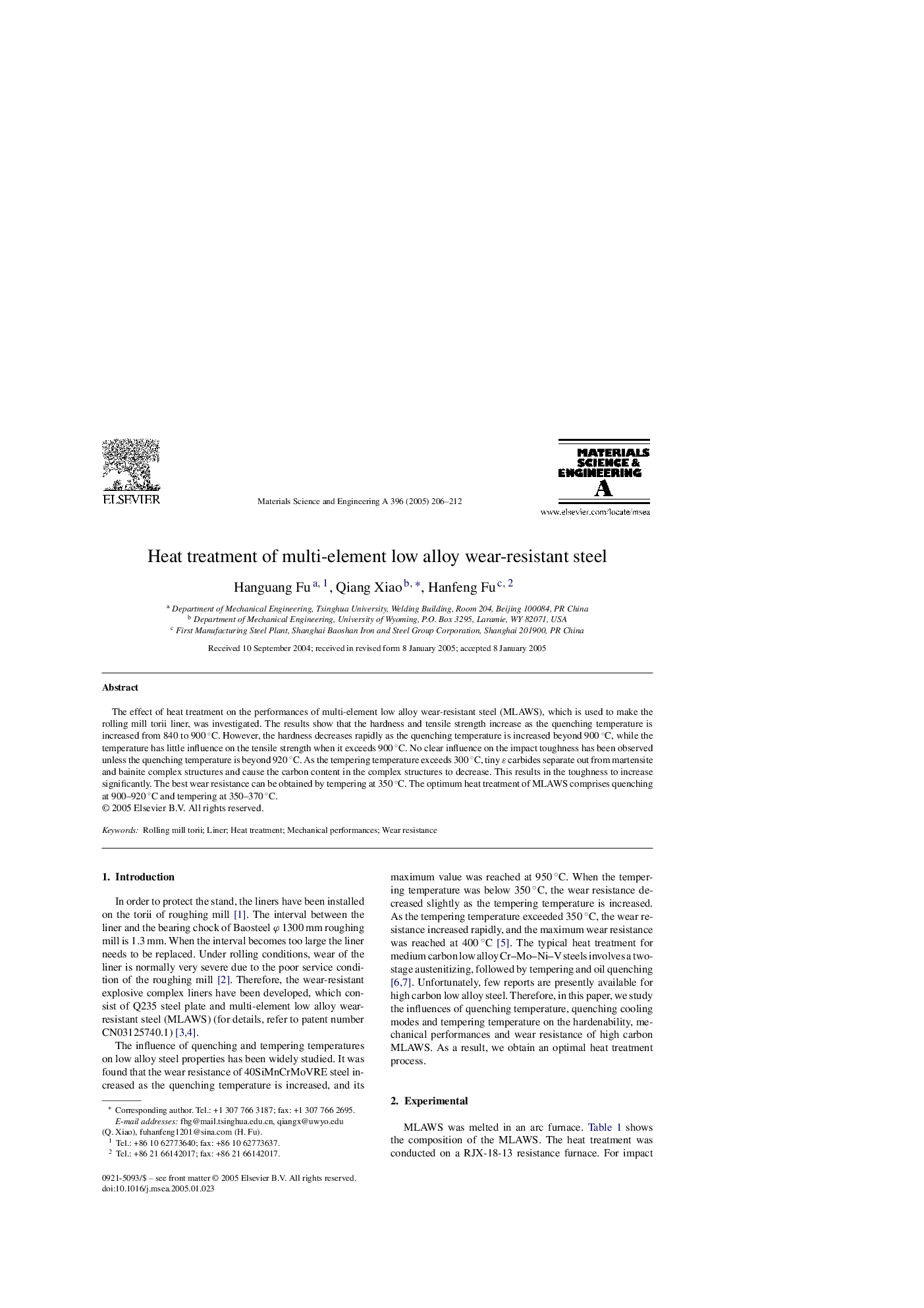| Article ID | Journal | Published Year | Pages | File Type |
|---|---|---|---|---|
| 9796344 | Materials Science and Engineering: A | 2005 | 7 Pages |
Abstract
The effect of heat treatment on the performances of multi-element low alloy wear-resistant steel (MLAWS), which is used to make the rolling mill torii liner, was investigated. The results show that the hardness and tensile strength increase as the quenching temperature is increased from 840 to 900 °C. However, the hardness decreases rapidly as the quenching temperature is increased beyond 900 °C, while the temperature has little influence on the tensile strength when it exceeds 900 °C. No clear influence on the impact toughness has been observed unless the quenching temperature is beyond 920 °C. As the tempering temperature exceeds 300 °C, tiny É carbides separate out from martensite and bainite complex structures and cause the carbon content in the complex structures to decrease. This results in the toughness to increase significantly. The best wear resistance can be obtained by tempering at 350 °C. The optimum heat treatment of MLAWS comprises quenching at 900-920 °C and tempering at 350-370 °C.
Related Topics
Physical Sciences and Engineering
Materials Science
Materials Science (General)
Authors
Hanguang Fu, Qiang Xiao, Hanfeng Fu,
